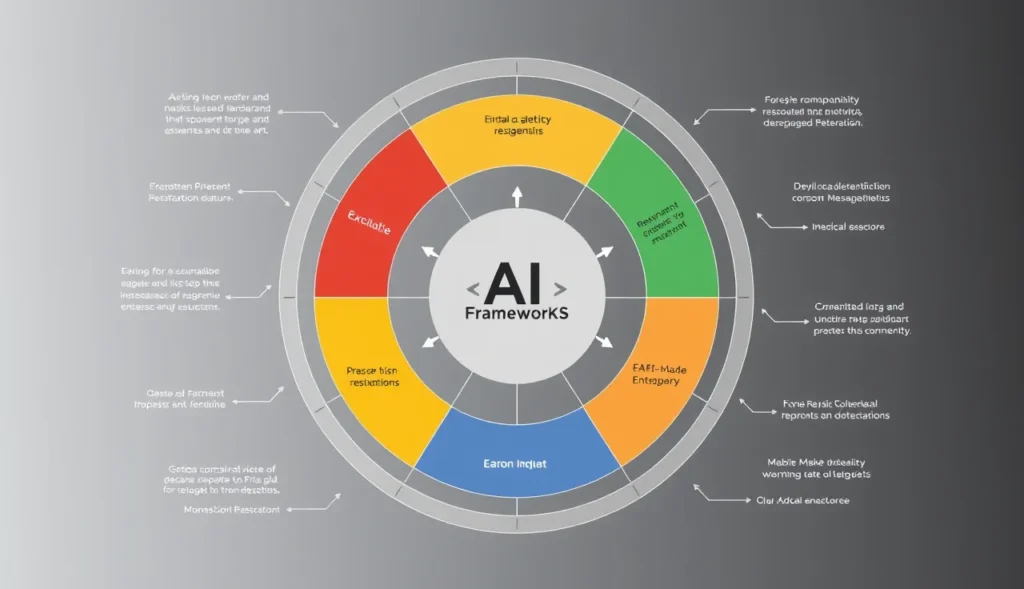
Amazon SageMaker’s Serverless Inference is transforming machine learning (ML) by simplifying model deployment. Let’s break down how this feature makes deployment seamless, reduces costs, and adapts to dynamic workloads.
What Is Serverless Inference in SageMaker?
A Game-Changer for ML Developers
Serverless inference enables you to deploy ML models without managing infrastructure. No need to spin up or maintain servers. Just upload your model, configure endpoint settings, and SageMaker handles the rest.
How It Works
SageMaker automatically provisions compute resources when an inference request is made. Once the request is handled, resources are released, saving you money and effort.
Key Benefits
- Cost Efficiency: Pay only for the duration of inference. Ideal for infrequent workloads.
- Scalability: Automatically adjusts to traffic demands without manual intervention.
- Reduced Complexity: Focus on your model instead of server maintenance.
Learn more about this innovation on the AWS blog.
Benefits of Serverless Inference in Action
Pay-as-You-Go Flexibility
With traditional ML hosting, costs can balloon even when endpoints are idle. Serverless inference eliminates that overhead.
Imagine running an ML model for fraud detection. Usage spikes during specific hours? No problem. Serverless architecture adapts dynamically, minimizing costs.
Designed for Burst Workloads
Serverless inference is perfect for sporadic or unpredictable workloads. For example:
- Startups experimenting with user engagement models.
- Research teams running occasional predictive tasks.
Easy Integration with SageMaker Features
You can combine serverless inference with SageMaker’s pipelines, training jobs, and data wrangling tools for end-to-end workflows.
Comparing Serverless Inference with Real-Time Inference
Real-Time Inference
Ideal for consistent, high-throughput needs. Managed endpoints stay live, ensuring low-latency responses.
Serverless Inference
Best for intermittent use cases where cost savings outweigh ultra-low latency requirements.
Both options share SageMaker’s reliable security, monitoring, and auto-scaling features.
Use Cases for SageMaker Serverless Inference
Prototyping and Experimentation
When building new ML models, developers often face unpredictable usage patterns. Serverless inference simplifies prototyping by removing infrastructure concerns.
- Test models with minimal setup.
- Avoid idle endpoint costs during low-usage periods.
- Iterate faster with on-demand scaling.
For example, data scientists testing anomaly detection models can deploy endpoints that activate only during validation or demos.
Seasonal or Event-Based Workloads
Think about retail businesses analyzing sales trends during holidays. These workloads spike temporarily, making serverless ML deployment perfect.
- No need to provision servers for a short-term load.
- Scale dynamically as data streams increase.
- Shut down seamlessly when demand drops.
Batch Processing in Near Real-Time
Serverless inference supports applications where batch processing needs quick turnarounds but occurs infrequently. Examples include:
- Quarterly financial forecasting.
- Running sentiment analysis after a product launch.

Setting Up SageMaker Serverless Inference
Prerequisites
To get started, you need:
- A trained ML model stored in Amazon S3.
- Access to AWS SageMaker Studio or CLI.
Step-by-Step Guide
- Create a Model: Register your model artifacts in SageMaker.
- Choose Serverless Endpoint: Select “Serverless” when deploying the endpoint.
- Configure Parameters: Set memory size (e.g., 1 GB, 2 GB) and max concurrency.
- Deploy: SageMaker handles provisioning automatically.
Check out the official AWS Documentation for detailed commands.
Security and Monitoring Features
Built-in Security
Serverless inference benefits from SageMaker’s robust IAM roles, VPC integration, and encryption standards. All requests are encrypted in transit and at rest.
Comprehensive Monitoring
You can track endpoint activity with Amazon CloudWatch and gain insights into:
- Request counts.
- Latency trends.
- Error metrics.
Proactively optimize costs and performance by identifying bottlenecks in workloads.
Expanding Serverless Capabilities in ML
Serverless inference is part of a broader trend in cloud computing, emphasizing efficiency and flexibility. Combined with services like Lambda and DynamoDB, it empowers developers to build fully serverless ML pipelines.
From startups to enterprises, SageMaker’s serverless inference redefines how teams deploy, scale, and manage machine learning models.
Cost Optimization Strategies for SageMaker Serverless Inference
Match Memory to Model Needs
When configuring serverless endpoints, selecting the right memory size is crucial. Over-provisioning increases costs unnecessarily.
- Small models, like simple regression models, work well with lower memory settings (e.g., 1 GB).
- Complex deep learning models may need higher memory configurations for optimal performance.
Optimize Request Patterns
Serverless inference charges are based on duration and invocations. To minimize costs:
- Bundle multiple small inferences into fewer requests where possible.
- Use batch transforms for heavy preprocessing outside of serverless endpoints.
Monitor and Adjust Usage
Use Amazon CloudWatch Metrics to identify usage trends and adjust configurations dynamically. For example:
- Lower memory for models during non-peak hours.
- Deactivate endpoints if usage drops significantly over time.
Advanced Use Cases
Multi-Tenancy in Machine Learning Applications
SageMaker serverless inference supports multi-tenant architectures. This is ideal for SaaS applications:
- Deploy shared endpoints for multiple clients with overlapping needs.
- Dynamically scale endpoints as tenants grow or shrink.
Example: A SaaS company offering personalized recommendations for retail clients can deploy a serverless endpoint to cater to seasonal shopping surges.
Edge-Centric Hybrid Solutions
Serverless inference integrates seamlessly into hybrid environments. While edge devices handle real-time tasks, cloud-based serverless endpoints perform heavy computation asynchronously.
Use Case: A healthcare provider uses IoT devices for real-time patient monitoring and SageMaker serverless inference for processing detailed diagnostics in the cloud.
Future Outlook for Serverless Inference
Trends in Serverless AI
As machine learning adoption grows, serverless architectures are becoming central to innovation:
- Increased integration with automation tools for smarter workflows.
- Pre-trained models in marketplaces will simplify serverless deployment further.
Opportunities for Growth
Serverless inference democratizes ML by lowering barriers for developers and businesses. Expect more industries to adopt this paradigm for cost-effective, scalable deployments.
Embrace the shift—serverless inference is paving the way for effortless ML innovation.
FAQs
How does serverless inference handle scaling?
Serverless inference dynamically scales based on the number of requests. For example:
- If your chatbot application receives hundreds of queries during peak hours, SageMaker automatically allocates resources to handle them.
- When activity drops at night, the resources scale down, ensuring you’re not charged for idle capacity.
This flexibility is especially useful for unpredictable workloads like marketing campaigns or seasonal traffic surges.
Is serverless inference suitable for real-time applications?
Yes, but with caveats. While serverless inference offers scalability, there may be slight cold-start latency when an endpoint hasn’t been used recently.
For mission-critical real-time tasks like financial trading or emergency healthcare monitoring, consider using real-time inference endpoints. For apps like customer feedback analysis or daily sales predictions, serverless inference is a cost-efficient option.
Can I switch between serverless and real-time inference?
Absolutely. You can deploy the same model using either option based on your workload requirements.
Example: A food delivery company could use serverless inference to predict demand during off-peak times and switch to real-time inference for high-traffic dinner hours.
What’s the pricing model for serverless inference?
Pricing is based on two factors:
- Duration of model execution (billed per millisecond).
- Number of invocations (each request is charged).
For instance, if your image recognition app handles 10,000 requests a month with an average inference time of 100ms, your costs will reflect the actual usage without paying for unused resources.
How do I monitor serverless endpoints?
You can use Amazon CloudWatch for robust monitoring and logging. Key metrics include:
- Invocation counts to track endpoint usage.
- Latency statistics to ensure performance consistency.
- Error rates for debugging issues.
Example: If an anomaly detection system shows high error rates, CloudWatch logs can help pinpoint faulty input data or model misconfigurations.
What types of ML models work best with serverless inference?
Serverless inference is ideal for:
- Lightweight models, like logistic regression or decision trees.
- Models with intermittent or bursty usage, such as sentiment analysis during product launches or forecasting weather patterns for specific events.
For heavy, always-on workloads, managed endpoints may be more efficient.
Is serverless inference secure?
Yes, SageMaker includes enterprise-grade security features:
- Data encryption in transit and at rest.
- IAM roles to control access.
- Integration with VPCs for secure networking.
For example, a financial institution using serverless inference to predict loan defaults can ensure customer data is safeguarded throughout the process.
Can I use serverless inference for batch predictions?
While serverless inference is designed for on-demand tasks, you can process small batches by bundling requests. For larger workloads, SageMaker Batch Transform is better suited.
Example: A research lab could use batch transforms for genome analysis but deploy serverless inference to make real-time predictions during patient consultations.
What are common pitfalls to avoid when using serverless inference?
- Underestimating cold starts: Mitigate this by prewarming endpoints with periodic “dummy requests.
- Over-provisioning memory: Choose memory settings aligned with your model’s needs.
- Ignoring monitoring: Regularly check CloudWatch logs to spot inefficiencies or errors early.
Can I use custom algorithms with serverless inference?
Yes, you can deploy custom algorithms by packaging them into a Docker container and hosting them on Amazon Elastic Container Registry (ECR). SageMaker serverless inference supports both built-in and custom models.
For example, a developer working on an NLP model for rare languages can fine-tune a custom algorithm and deploy it serverlessly without worrying about infrastructure.
Does serverless inference support GPU-based models?
No, serverless inference currently supports only CPU-based models. However, many use cases—such as recommendation systems or simple classification tasks—perform well on CPUs.
For GPU-heavy tasks like image processing with convolutional neural networks (CNNs), consider SageMaker’s real-time inference with GPU instances.
How does SageMaker serverless inference compare to AWS Lambda?
While both are serverless, their use cases differ:
- SageMaker serverless inference is optimized for hosting ML models with managed endpoints.
- AWS Lambda is a general-purpose compute service for lightweight, event-driven tasks.
Example: For an e-commerce site, use Lambda for tasks like sending order confirmation emails and SageMaker serverless inference for dynamic price predictions based on market trends.
Can I deploy multiple models on the same endpoint?
Currently, SageMaker serverless inference supports one model per endpoint. However, you can deploy multiple endpoints for different models or scenarios.
For instance, an insurance company might deploy separate endpoints for fraud detection and claim prediction models, each optimized for unique workloads.
What are the memory limits for serverless inference endpoints?
Serverless inference supports configurable memory sizes ranging from 1 GB to 6 GB. Choosing the right configuration ensures efficient execution.
Example: A small regression model for sales forecasting might need only 2 GB of memory, while a larger transformer-based NLP model could require up to 6 GB.
How do I update a model deployed on serverless inference?
Updating a model involves:
- Registering the new model version in SageMaker.
- Reconfiguring the serverless endpoint with the updated model.
This process is seamless, ensuring minimal downtime. For example, when rolling out improvements to a chatbot, you can replace the model without disrupting customer interactions.
Can I integrate serverless inference with other AWS services?
Yes, serverless inference integrates well with AWS services like:
- S3 for model storage.
- Lambda for pre/post-processing of data.
- Step Functions for orchestrating workflows.
For example, a logistics company could use Step Functions to trigger serverless inference for delivery time predictions after an event from Amazon SNS.
Is serverless inference suitable for long-running tasks?
No, serverless inference is designed for short-duration, stateless tasks. For longer processing times, consider other SageMaker options or use batch processing tools.
For instance, a weather analytics team might rely on batch transforms for extensive climate modeling while reserving serverless inference for real-time local temperature predictions.
How do I debug errors in serverless inference?
SageMaker provides CloudWatch logs for troubleshooting. Logs capture details like request payloads, response times, and error messages.
Example: If a recommendation system returns inconsistent results, CloudWatch logs can reveal issues with input data formatting or model logic.
What’s next for SageMaker serverless inference?
AWS is continually enhancing SageMaker’s capabilities. Potential future improvements may include:
- GPU support for compute-intensive tasks.
- Multi-model endpoints to reduce the number of deployed endpoints.
- Integration with more AI frameworks for broader compatibility.
By staying current with updates, developers can ensure they’re leveraging the full potential of SageMaker serverless inference.
Resources
Official AWS Documentation
Amazon provides comprehensive documentation to guide you through every aspect of SageMaker serverless inference. Start with the following:
- Getting Started with SageMaker Serverless Inference
- Pricing Details for SageMaker Serverless Inference
AWS Blogs and Tutorials
Dive into practical use cases and expert insights with AWS blogs and video tutorials:
- Introducing Serverless Inference in Amazon SageMaker
- Walkthroughs on integrating serverless inference with other AWS services.
Community Resources and Forums
Collaborate with ML enthusiasts and AWS professionals through community-driven platforms:
- AWS Developer Forums
- Reddit’s r/aws for real-world insights and Q&A.
Hands-On Training and Courses
Enhance your skills with interactive courses:
- AWS Skill Builder: Courses on SageMaker, including serverless features.
- Coursera and Udemy: Look for ML deployment-focused courses that feature SageMaker.
GitHub Repositories and Code Samples
Explore open-source projects to see how others implement serverless inference:
- AWS Samples GitHub Repository for SageMaker serverless examples.
- Community-contributed repositories for specialized use cases.





